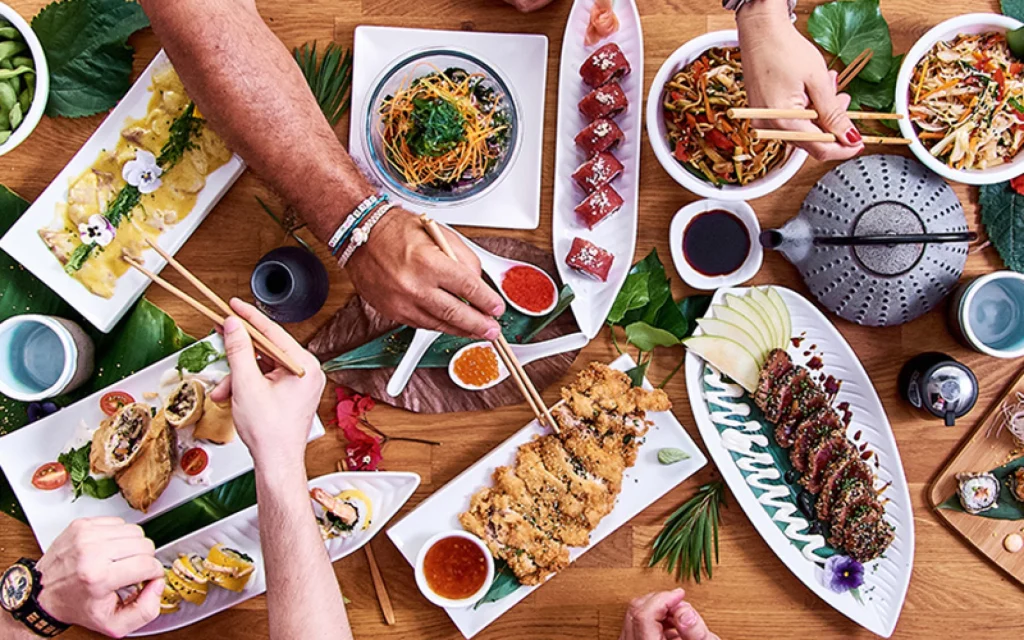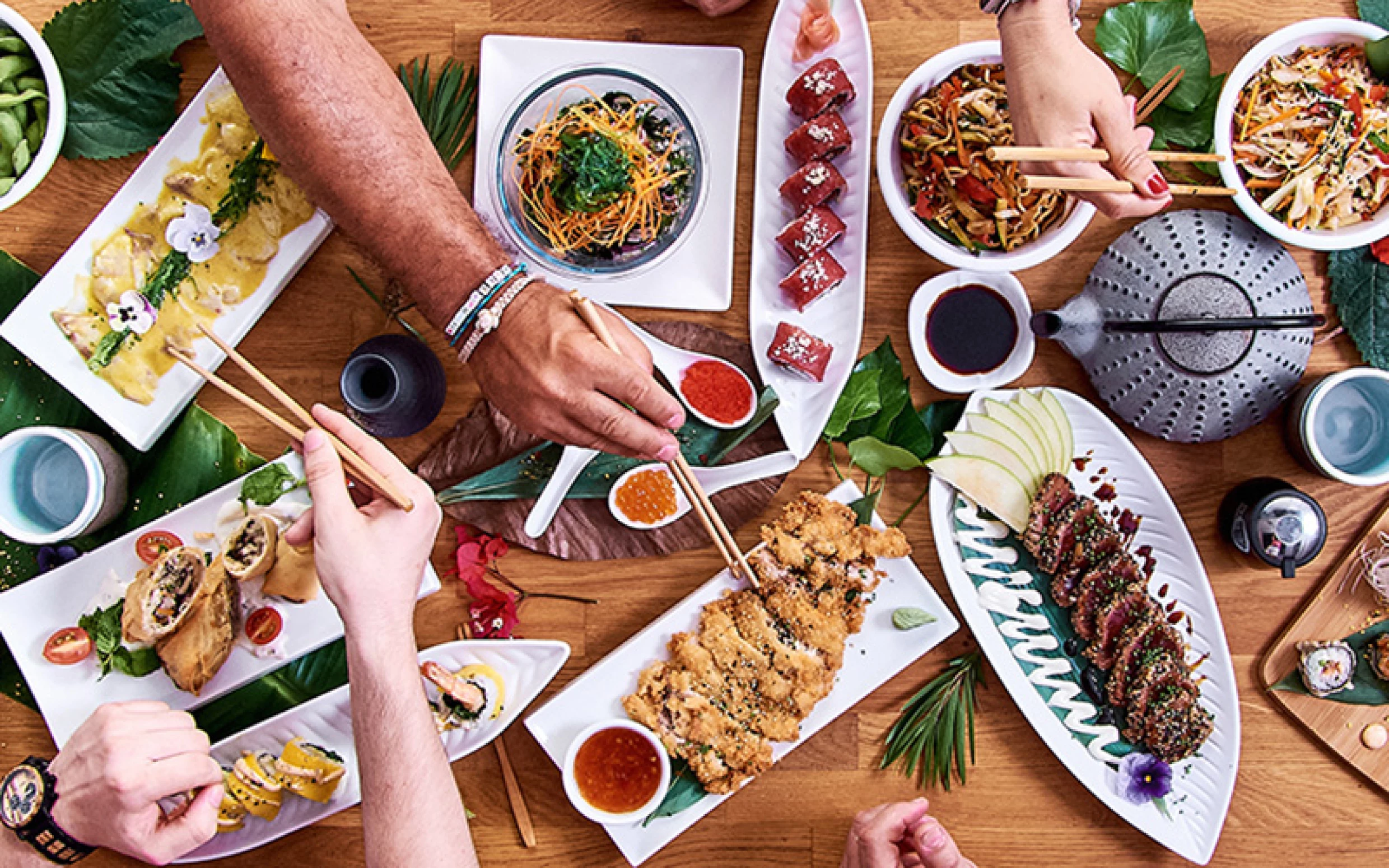
The culinary traditions of Japan, known as washoku, encompass a rich array of regional and traditional dishes that have evolved over centuries in response to political, economic, and social changes. At the heart of Japanese cuisine is rice, often accompanied by miso soup and complemented by a variety of seasonal ingredients. Common side dishes include fish, pickled vegetables, and vegetables simmered in broth. Seafood is a staple, served grilled, raw as sashimi or sushi, or deep-fried in a delicate tempura batter. Noodles like soba and udon are also widely enjoyed alongside rice.
Influenced historically by Chinese cuisine and more recently by Western culinary traditions, Japanese food has embraced foreign influences while adapting them to local tastes and ingredients. Dishes like ramen, gyōza, spaghetti, curry, and hamburgers have found their way into Japanese cuisine, reflecting a modern culinary landscape shaped by global influences.
Traditionally, meat was avoided in Japanese cuisine due to Buddhist dietary restrictions, but with Japan’s modernization in the late 19th century, meat-based dishes like tonkatsu and yakiniku have become commonplace. Today, Japanese cuisine, particularly sushi and ramen, enjoys widespread popularity worldwide.
Japan’s culinary excellence is recognized globally, with the country boasting the most 3-starred Michelin restaurants since 2011. Tokyo, in particular, has consistently held the title of the city with the most 3-starred restaurants in the world. In 2013, Japanese cuisine was inscribed on the UNESCO Intangible Cultural Heritage list, acknowledging its cultural significance and enduring legacy.
_ _ _ _ _ _ _
Bon appetit!
Tags: #recipe #cooking #food #delicious #еда #recipes #вкусно #cuisine #食谱 #烹饪 #foryou
